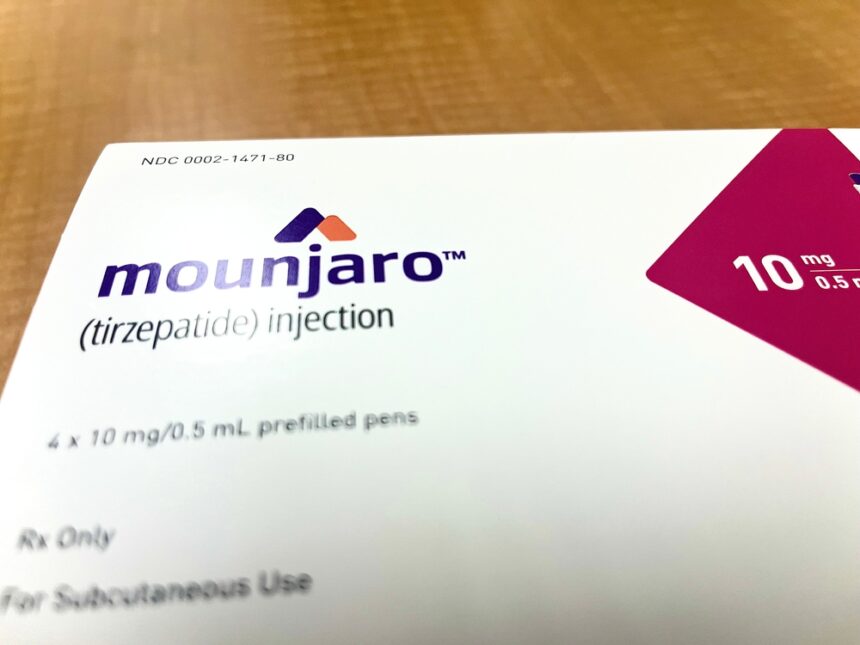Diabetes and obesity, two of the most pressing global health challenges, affect millions and can lead to severe complications. The FDA’s recent approval of Tirzepatide, a novel medication, represents a significant advancement in combating these conditions. It has shown promising results in improving blood sugar control and aiding significant weight loss in type 2 diabetes patients. This article will explore the mechanisms by which it contributes to diabetes management and weight reduction. We will also discuss its availability in different forms, including Mounjaro vials in Canada and Mounjaro injection pens in the US, highlighting its potential to revolutionize treatment approaches for these chronic conditions.
Background on Diabetes and Obesity
The global prevalence of diabetes and obesity is alarming, with over 422 million people affected by diabetes and obesity rates nearly tripling since 1975. These conditions significantly impact health systems, economies, and individuals’ quality of life. Type 2 diabetes, often linked with obesity, has led to the term “diabesity.”
The complexity of treating these conditions is evident, as traditional treatments primarily manage symptoms and prevent diabetic emergencies. The introduction of Tirzepatide offers new hope, providing a dual-action solution that addresses both diabetes and obesity effectively.
What is Tirzepatide?
Tirzepatide, known commercially as Mounjaro, is an innovative medication in the treatment of type 2 diabetes. It acts as a dual agonist of the glucose-dependent insulinotropic polypeptide (GIP) and glucagon-like peptide-1 (GLP-1) receptors, targeting essential pathways in glucose metabolism. This dual-action approach differs significantly from traditional diabetes medications. Its FDA approval for adults with type 2 diabetes aims to improve blood sugar control alongside diet and exercise, marking a notable advancement in diabetes care. Of course, it is still important to manage carbohydrates too.
Mechanism of Action in Diabetes Management
Tirzepatide’s unique mechanism of action addresses key aspects of type 2 diabetes management. It functions as a dual agonist of the GIP and GLP-1 receptors, playing a crucial role in glucose regulation. GIP enhances insulin synthesis and release post-meal, while GLP-1 stimulates insulin secretion, inhibits glucagon release, and slows gastric emptying. This comprehensive approach surpasses traditional diabetes medications, which often target only one aspect of glucose metabolism. Tirzepatide’s dual action not only improves insulin secretion but also addresses other critical factors in glucose regulation, offering a holistic approach to diabetes management. Additionally, its ability to slow gastric emptying aids in weight management, a common challenge for individuals with type 2 diabetes.
Tirzepatide and Weight Loss
Tirzepatide, particularly the tirzepatide injection for weight loss, has emerged as a key option for individuals with type 2 diabetes looking to manage their weight. Its effectiveness goes beyond just controlling blood sugar, thanks to its unique mechanism of action. As a dual agonist of GIP and GLP-1 receptors, Tirzepatide enhances insulin secretion and regulates appetite. GLP-1 receptor activation promotes satiety, reducing hunger and caloric intake, crucial in managing obesity. Clinical trials have demonstrated its efficacy in weight management, with participants showing significant weight loss compared to placebo or other diabetes medications. This weight loss is a direct result of its action on appetite and calorie absorption, further supported by its ability to delay gastric emptying.
Benefits of Tirzepatide in Diabetes and Obesity Treatment
Tirzepatide offers dual therapeutic benefits in glycemic control and weight management, making it a potentially transformative treatment for patients with type 2 diabetes and obesity. Its dual action improves overall metabolic health and has the potential to redefine the standard of care in treating patients with type 2 diabetes complicated by obesity.
Side Effects and Safety Considerations
Tirzepatide, like all medications, has side effects, including gastrointestinal symptoms. Its safety profile requires caution in specific patient populations, and healthcare providers should monitor patients for hypoglycemia, especially when used with other glucose-lowering drugs.
Comparative Analysis with Other Treatments
Tirzepatide’s dual action on GIP and GLP-1 receptors sets it apart from traditional diabetes medications. Compared to metformin or sulfonylureas, it offers significant weight loss benefits, a crucial factor for many patients with type 2 diabetes. Its dual mechanism may offer superior efficacy compared to GLP-1 receptor agonists like liraglutide.
Patient Considerations and Treatment Accessibility
Patients considering Tirzepatide should evaluate their health needs and potential side effects. Accessibility is influenced by insurance coverage and healthcare provider recommendations. As a newer medication, its cost might be higher compared to older diabetes treatments.
Conclusion
Tirzepatide marks a significant advancement in managing diabetes and obesity, offering dual benefits in glycemic control and weight loss. Its future in medical care looks promising, potentially changing treatment approaches for these interlinked conditions and emphasizing the importance of personalized medical care.

